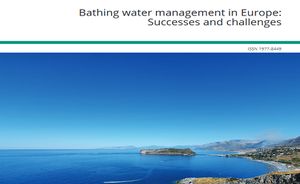Improvements in European bathing water quality but there are still opened challenges
Last EEA data show that the number of bathing sites monitored under the Bathing Water Directive has increased from about 7,500 in 1990 to more than 22,000 in 2019. From 1991 to 2019, the share of bathing sites with sufficient water quality has increased from 74 % to more than 95 % .
n Europe and many other parts of the world, the quality of coastal waters, rivers and lakes generally degraded from the 19th century onwards, mainly owing to growing towns and industries discharging untreated waste water. During the 20th century, the increased use of pesticides and fertilisers on agricultural land added to this pollution.
However, European environmental policy and management have dramatically improved bathing water quality across Europe during the past 40 years. Safe bathing is now possible in many European capitals, including Amsterdam, Berlin, Budapest, Copenhagen, London, Riga and Vienna, the report notes. Significant investments in urban waste water treatment plants and improvements in sewerage networks have been the key measures behind this success.
The EEA report ‘Bathing water management in Europe: Successes and challenges’ showcases the success story of the improvements in bathing water quality since the introduction of the EU Bathing Water Directive in 1976, while also identifying challenges for future bathing water management.

